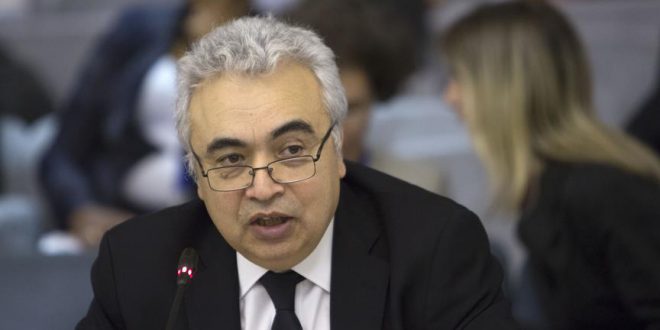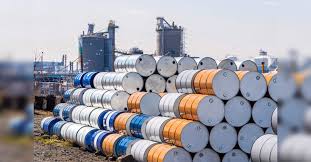The International Energy Agency cut forecasts for oil demand this year and next because of growing threats to global economic growth. yet warned that dwindling spare oil supplies will keep prices high.
Reduced growth estimates from the International Monetary Fund. trade disputes and the strain of high oil prices all fed into the downgrade to consumption. the Paris-based IEA said in its monthly report. Yet as supply losses deepen in OPEC members Venezuela and Iran. the level of spare production capacity left elsewhere amounts to just 2% of global demand and will likely shrink further. it said.
“Expensive energy is back“ and “it poses a threat to economic growth.“ said the IEA. which advises most major economies. “For many developing countries. higher international prices coincide with currencies depreciating against the U.S. dollar. so the threat of economic damage is more acute.“
Oil climbed to a four-year high above $85 bbl in London last week on concern that looming U.S. sanctions on Iranian crude exports will leave markets short of supply later this year. Prices have since retreated. as attention switches to the demand threats posed by faltering emerging economies and the U.S.-China trade dispute.
The IEA cut its estimate for global oil-demand growth for both 2018 and 2019 by about 110.000 bpd to 1.3 million and 1.4 MMbpd respectively. The revision also reflected changes in the way the agency assesses Chinese consumption. Both global demand and supply are close to hitting 100 MMbpd for the first time.
Fatih Birol. the IEA’s executive director. said in a Bloomberg interview earlier this week that prices are “entering the red zone“ that signals danger to consumption. and called on OPEC members with spare supplies to increase production.
The latest report showed that Saudi Arabia and other key nations in the Organization of Petroleum Exporting Countries are already delivering to make up for fellow members — notably Iran and Venezuela — who are suffering losses. Producers in the so-called OPEC+ coalition. which also includes Russia. have added 1.6 MMbpd since May. the report showed.
As a result. inventories have been replenished and it appears “that the oil market is adequately supplied for now.“ the agency said.
Yet the IEA also recognized that the efforts by producers have sharply depleted the amount of spare supply kept aside for disruptions and emergencies. most of which is held by Saudi Arabia. While the agency estimates that the kingdom could increase by about 12%. it’s unclear how long this would take or be sustained.
The amount available will almost certainly be tested in the coming months as U.S. sanctions take effect on Iran. which has already seen supplies fall to the lowest in more than two years. according to the report. Iranian exports have slumped about 26% to 1.8 MMbpd.
“This strain could be with us for some time and it will likely be accompanied by higher prices. however much we regret them and their potential negative impact on the global economy.“ it said.
 Iran Energy News Oil, Gas, Petrochemical and Energy Field Specialized Channel
Iran Energy News Oil, Gas, Petrochemical and Energy Field Specialized Channel




